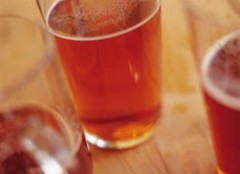Cask Report: Different beer factions should unite and celebrate growth of cask ale

Anyone who wonders what the future of the pub is — or indeed if it has one — should be dragged here by the scruff of the neck and shown around this beautifully renovated, warmly welcoming building until their face splits in a massive grin.
I gave my usual PowerPoint presentation about the state of the cask ale market, and was pleased to see several unfamiliar faces in the room.
Don’t get me wrong, I love seeing the same old faces from the industry, and I enjoy drinking with them. But it can be quite frustrating when you feel like you’re always preaching to the converted.
This time, we seemed to be attracting new interest. And this was borne out by various media outlets including The Sun, The Times, and even Radio One Newsbeat running stories the following day that repeated the headline I’d been desperate to give since we launched the first report in 2007, and have never been able to utter, until now: cask ale is in volume growth. For the first time in 20 years.
That was pretty satisfying.
Once I’d finished the presentation I enjoyed several pints of Wild River, Fuller’s answer to the wave of super-hoppy, North American-style microbrewed craft beers currently sweeping the nation. That was pretty satisfying too. It encapsulates what Fuller’s do best: straddling the divide between traditional cask ale and modern craft beer.
This is a divide that’s perplexing many in the industry at the moment. The new wave of hop-headed young beer bloggers dismiss trad cask as ‘boring brown beer’. At the same time, the more staid margins of the Campaign for Real Ale see craft beer as the enemy, the thin end of a wedge that’s going to have us all drinking crappy keg beer again before we know it.
The other great stat in this year’s Cask Report — which shows that cask has overtaken keg to become the biggest form of draught ale dispense — suggests such paranoia is unfounded. As craft keg — and craft beer generally — creates increasing excitement, sales of cask are going up, not down.
This proves something that’s perfectly obvious when you look at the bar from a drinker’s perspective rather than an industry one: cask ale and craft beer go hand in hand. When you find each at its best, they’re in the same pub, being enjoyed by the same drinkers.
This phantom war is very similar to the ongoing hostilities between large regional brewers and microbrewers that occasionally spill into these pages. Microbrewers are desperate to tell us that the variety and momentum they have introduced is the key driver of interest in cask ale, that people want local, artisanally produced products.
The regional brewers counter that people want familiar, tried and trusted brands, that only brewers with scale who invest in equipment, training and advertising ensure the ongoing prosperity of cask ale.
Trying to write an impartial report that pleases everyone is tricky in the shadow of this raging debate. (A few years ago, each side felt they were under-represented in the report compared to the other — that’s when I knew I had the balance right!)
But this year, we had research numbers in the report that proved what the drinker has known all along. Both sides are entirely correct. These positions are not in opposition to each other.
Take both together, point them in the same direction, and you can see why cask is doing so well.
One survey showed us that 78% of drinkers searched for new and different beers from microbreweries, while 75% said that ‘a brand I know and trust’ is important when choosing a beer.
You’ll notice that adds up to more than 100. These are the same people, agreeing with both statements. Another survey shows an even split between cask drinkers who stick with what they know and those who actively seek out something new.
Yet another shows an even split between those who want cask ale to be easy drinking and lightly flavoured, and those who prefer it full of character.
Any pub that stocks more than one or two cask ales will maximise its rate of sale if it stocks a mix of familiar and unfamiliar beers.
Different people have different tastes. And sometimes, the same people change their tastes depending on the time of the evening and the nature of the occasion.
There’s really no need to argue about it: in cask ale, big and small are both beautiful.














